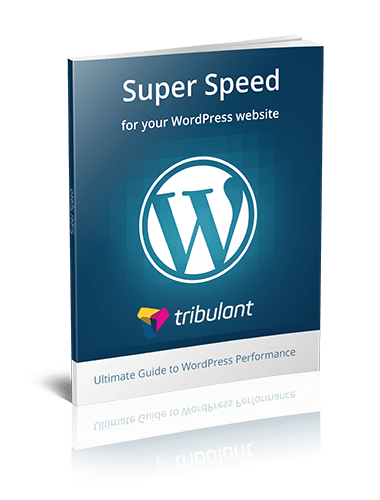
Advanced Technical SEO in 2019: A Complete Guide

With each year passing, Google continues to make alterations to the search algorithms for creating a more consistent search environment for users. This is one of the most significant reasons every small and big business is going crazy over the SEO thing. However, the only thing which has emerged through big changes in the process than it is all about the technical SEO.

Technical SEO is all about working on proactive practices that can help in fixing the areas related to On page SEO. though SEO is about working on so many different tasks that can help website ranking improvement still there are many mistakes which most people need to avoid with their SEO plan.
No matter you are working on a new website or you have an existing website which needs to be worked, to have a planned technical SEO checklist is always worth giving the efforts for an effective SEO strategy. Now let us move towards a quick guide on technical SEO that can not only help your website to gain credibility from search engines but also making the most with exposure goals.
Counting on the Google Metrics
Though you may find it very obvious to work, before you take your website before search engine and users, it is good to have tracking tools with you. It is actually very wise to work on basics like google tag manager, google analytics, and google search console at priority to avoid any sudden errors. You can easily keep the entire information about the users and audiences using google analytics, upgrading the needs for indexing and crawling to gain visibility through search console, and take advantage of google tag manager to implement tags and get better analytics tracking.
Moreover, the approach to check on these tools should never be one time go, rather you should take the complete benefit of these metrics by staying informed about alerts and notifications that keep you notified over upcoming or possible issues.
URL Canonicalization
If there is anything on which most of the websites still fail, it is multiple URLs for the same page. There are so many websites which run on different URLs but get the userland on the same page and most of the time it is either the faulty content management or server issues. For instance, suppose there is a website named XYZ services, bad URL canonicalization for its contact us page would show as:
-
https://XYZ.com/contact-us/
-
https://www.XYZ.com/contact-us
-
https://www.XYZ.com/contact-us/
-
https://XYZ.com/contact-us
-
http://www.XYZ.com/contact-us
Though all these pages are same when clicked, they all appear different to the search engines. This may create a spammy image of your website because of similar content shared for all URLs and it could only be fixed through URL canonicalization. Most of the website development platforms like WordPress and tools like Yoast have a separate field for canonical URL that can be used to make your website SEO friendlier.
Structured Data Markup
One of the most significant trends that have been seen around on the web is the use of structured data markup. Structure data or schema markup is all about presenting the content in a more presentable manner before the search engines.
So, either you want to share your business details like name, address, and phone number, or you want to bring reviews and ratings at the display, use of structured data can help anyone to ensure better interpretation of content by the search engine.
Implementation of structured data can help your website to reach search results in a more communicable manner like rich snippets, expanded meta-tags, and many other details which are good from a competitive point of view in your niche.
The best part about working on implementing the structured data is the benefit of search console where any user can get to know about the errors and understand the smarter way to add a markup on the website.
Robot.txt Files
Robot.txt files are robots exclusion protocol is an amazing tool for an improved view of your website when it is crawled by the search engine. When you use a robot.txt file on your website, you get the power to specify the content and areas of the webpage which you need to be crawled by the search engine.
These files help prevent search engine to disallow certain URLs from crawling and indexing. However, you may need to update the robot.txt file from time to time in order to reframe the parameters for content regarding permissions for indexing.
This means if you have any pages which have privacy concerns, you can work such goals by making them accessible to crawling by the search engine. Moreover, a routine audit of the website to check for robot.txt files can benefit in your SEO objectives as robot.txt files can be used to gain a reference to any updates related to XML sitemap for imperative results.
Keeping Account of Errors
If you are desperate to work on your website goals, you can go for some professional SEO service who can get you amazing hold on tools like Google search console, Moz, or Semrush, etc. to work on technical SEO errors like broken links, meta duplication, crawl errors, dead links, etc.
Most of the time errors usually occur when the search engine tries to crawl for your webpage but is not able to complete the action. There are many errors related to web page crawling or duplicate content but all these errors could be easily worked with a routine check schedule.
Implementation of Hreflang Tags
One of the toughest challenges to manage with international SEO is integrity through the right implementation of hreflang tags. This tag helps Google to present the content with the right interpretation of location and browser settings. For instance, an incorrect implementation may take a Russian user to some Chinese landing page making the entire visibility suffer. So if you need to ensure perfect use of Hreflang tags make sure you follow certain guidelines.
-
Consistency in implementation method i.e. either use the tag in header page of all websites or embed it into the XML sitemap.
-
Include tags for all regionalized pages
-
Never use hreflang tag in the place of canonicalization.
Evaluating Performance Metrics
One of the most significant things to work on your website performance is to analyze and work on performance metrics. For working on such goals, you can take advantage of GTMetrix or google page speed insights to know about your website’s load speed and know about all the possible reasons that are leading to lag. Moreover, GT Metrix could help you with information like minification of CSS, HTML, and javascript for optimized redirects, caching, and images that can help fix load speed issues.
Site speed is one of the most important factors that can affect your ranking because it counts into the user experience. Google rewards fast loading websites by counting on time on site, bounce rate, etc. Moreover, the insights shared by these tools can be related to image compression or server requests which can benefit your website’s SEO in the long run.
Security with HTTPS
If you are not aware of the fact, there is a sudden inclination of all the websites towards the SSL encryption. This is not a random move but rather a ranking factor which is considered by Google to decide on your website’s ranking. However, when you migrate to HTTPS, make sure you get proper redirects for all the pages otherwise it may get difficult for a user to reach your website.
Moreover, you can always try to take benefit of tools that can generate your crawl report including a list of potential errors related to 404 redirects. But still, you can use tools like Google search console to know your error list that is likely to arise with HTTPS implementation.
Mobile Responsiveness
When most of the users on the web are using mobile devices to access any business, a website which is not responsive on mobile could suffer a drop in rankings on search results. Google allows you to check your website for mobile responsiveness which can help you optimize your website and make it better when any user lands on it through mobile devices. This may need to work on the use of images, content, links, and navigation to avoid zooming efforts.
Also, a mobile-friendly website should quickly adapt to any screen size irrespective of the device used by the user. Otherwise, you can aim for AMP or accelerated mobile pages on your website to create a better experience for mobile users who need to reach your business.
Conclusion
SEO is vital for every business irrespective of the time a website is on the internet. Precise and accurate implementation could help you turn your exposure and rank goals into reality bringing better leads.
However, the entire process to work on the technical SEO may seem exhausting and time-consuming, every single effort you make to work on the above guide can help you strengthen your website’s position on search engine result pages. Also, keeping a check on all the technical SEO factors shared above can benefit you in creating the perfect website that can help you surpass your competitors and reach your defined goals. Hope working on these ideas benefit your business in the long run until we receive any new updates from the search engines to create a more personalized user experience.

Ravi is CEO & founder of Webomaze Pty. Ltd. He believes in serving the industry with some unique solutions with a huge variety of services including web design & web development, SEO Services, ECommerce Development, and so on.
Beautiful Newsletter Templates
Professional newsletter templates that are fully responsive for desktop, tablet, and mobile. They are 100% cross-client compatible.




No comments yet